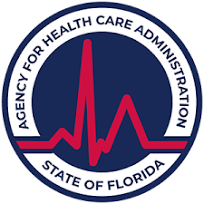Dealing with disorders such as anxiety, depression, or ADHD is challenging as it directly impacts mental health. If not taken precautions properly, it can cause a dual diagnosis. A person with a dual diagnosis suffers from both a substance use disorder and a mental health disorder. It can be tricky for individuals who suffer from both disorders to cope with their symptoms because the two conditions can intensify one another.
Now you may feel hopeless and convinced that there is no cure.
But an emerging alternative to traditional treatment methods, called neurofeedback therapy, is gaining popularity. It can help individuals achieve long-term recovery and lead fulfilling lives.
What is Neurofeedback therapy?
Neurotherapy is a non-invasive treatment procedure that scans and regulates brain activity. The practitioners place Electroencephalography (EEG) sensors on the patient’s scalp to analyze real-time brainwave rhythms. The feedback on the patient’s brainwave activity highlights on the monitor through audio or visual cues.
The brain adjusts abnormally fast or slow waves throughout these Neurofeedback sessions to achieve a normal range. As a result, they learn to improve their psychological and cognitive performances.
Please read the whole article to learn more about the benefits of neurofeedback therapy and how it works. Then make an informed decision about your mental health.
How does Neurofeedback Therapy Work?
Augustine Recovery encourages innovative therapeutic approaches to assist those battling addictions and co-occurring mental health conditions. One such treatment that we provide is neurofeedback therapy.
The first step in prescribing neurofeedback therapy is Brain mapping therapy for trauma, anxiety, or depression.
The experts place sensors around the patient’s scalp in this procedure. These sensors track and analyze the brain waves occurring in particular brain parts.
The findings, or mapping of the patient’s brain activity, then are contrasted with a database of identical-age, asymptomatic standard norms certified by the FDA. The comparison enables the experts to spot regions out of control and connected to symptoms.
After compiling and analyzing the data from the brainwave analysis, the Medical Director develops a treatment plan to target the regions of dysregulation.
The person is trained later to manipulate brain activity by watching a movie to increase or reduce particular brainwave patterns. When the brainwaves have optimal range, you get rewarded by watching the film without interruptions. However, when your brain waves reach the abnormal range, the display before you disappears; this unpleasant experience encourages your brain to shift its rhythms back into the ideal range. When this occurs, you are awarded by the video continuing without breaks or fading.
As a result, the brain adapts to create more desirable brainwave rhythms and fewer undesirable sequences over time, which can result in enhanced emotional and cognitive performance.
Individuals can manage their brainwave activity and minimize signs of illnesses such as stress, depression, ADHD, and others by exercising their brains in this manner. The average success rate of Neurofeedback sessions is 75-80%, as quoted by clinical professionals and published scientific research.
Who is a good candidate for neurofeedback?
This therapy can potentially treat numerous conditions associated with abnormal brainwave
patterns.
Neurofeedback therapy can help you with the following conditions:
● Anxiety
● Migraine
● Clinical Depression
● ADHD
● Panic attacks
● Insomnia
● Stress and more
● PTSD
Benefits of Neurofeedback therapy
The benefits of neurofeedback are experienced throughout and even after the session. In addition to being painless and safe, the treatment improves abstinence rates for substance abusers.
Keep reading to find out the benefits of neurofeedback therapy.
A drug-free therapy
One of its main advantages is that neurofeedback treatment is a non-invasive, drug-free treatment option. In addition, it entails that patients can undergo treatment without running the danger of addiction or experiencing the adverse side effects sometimes linked to conventional medication-based therapies.
Enhanced memory
Neurofeedback therapy enhances memory and cognitive performance. An individual can improve their remembrance and memory skills by exercising their brains to create particular brainwave frequencies linked to memorization.
Provides emotional stability
Patients can learn how to manage their emotional reactions and lessen the degree and frequency of mood changes by addressing the brain activity connected with emotions. It helps mitigate overwhelming feelings leading to less intrusive thoughts.
Reduces anxiety
Does neurofeedback work for anxiety? Yes, it does! Individuals can discover to regulate their emotions in stressful situations by training their brains to produce more alpha brain waves associated with relaxation and calm. As a result, it can ease the signs of anxiety disorders and the severity and frequency of panic disorder.
Improves sleep
Neurofeedback addresses the sensorimotor brain’s sensorimotor rhythm to improve sleep quality. People can attain a much more quality sleep by training their brains to create extra delta brainwaves linked with deep sleep. It can significantly enhance health and well-being while lowering the likelihood of chronic diseases like diabetes and heart disease.
Decrease depression symptoms
Neurofeedback can result in behavioral adjustments that promote relaxation and improve mood. It does help with depression treatment by training the brain to generate more alpha and theta brainwaves connected with a calm and contemplative condition. As a result, people can lessen depression signs such as grief, hopelessness, and loss of enthusiasm for activities. The advantages of neurofeedback can extend far beyond initial treatment, making it a possible long-term cure for depression.
Reduces ADHD
ADHD appears as slow-moving theta impulses. In addition, some people have a motor-sensory rhythmic disorder. Neurofeedback therapy aids in the correction of such brain problems, hence reducing ADHD symptoms. With this technique, patients can improve their concentration, minimize hyperactivity, and perform better in school and work.
Helps cure PTSD symptoms
For those who have PTSD (Post-Traumatic Stress Disorder), neurofeedback therapy may be a viable option. PTSD is a mental illness disorder that can arise after seeing or experiencing a traumatic incident, such as a military battle, sexual or physical abuse, or a terrible accident.
Neurofeedback therapy teaches the mind to manage its activities using real-time input. For example, Neurofeedback for PTSD can assist individuals in managing their fear response and minimize the frequency and severity of distressing memories.
Conclusion
Neurofeedback therapy has demonstrated significant effects in lowering depression and anxiety symptoms and enhancing concentration and focus. This therapy can also benefit individuals who suffer from dual diagnosis because of addiction. Undertaking proper treatment is advisable, or it results in deteriorating mental health care.
While this therapy has gained popularity as an efficient therapy for various mental health issues, it is essential to get evidence-based treatment from experienced practitioners. Augustine Recovery is a well-known recovery facility center that provides evidence-based treatments for behavioral health conditions, such as neurofeedback therapy, EMDR, and more. Our expert team of clinicians is dedicated to giving each patient personalized care, assuring they experience the best cure for their ailment.
If you’re ready to embark on a journey toward stable mental health, we are just one call away.
Links
1. https://www.apa.org/monitor/2016/03/cover-feedback
2. https://www.centerforbrain.com/neurofeedback/frequently-asked-question/#:~:text=The%20success%20rate%20commonly%20quoted,respond%20more%20quickly%20than%20 others.
3. https://www.psychiatrictimes.com/view/eeg-neurofeedback-treating-psychiatric-disorders
4. https://www.ncbi.nlm.nih.gov/pmc/articles/PMC8546766/#:~:text=Most%20studies%20regarding%20surface%20and,be%20present%20in%20some%20studies.
5. https://www.ncbi.nlm.nih.gov/pmc/articles/PMC6650780/#:~:text=Neurofeedback%20is%20a%20promising%20alternative,to%20self%2Dregulate%20brain%20functions.





